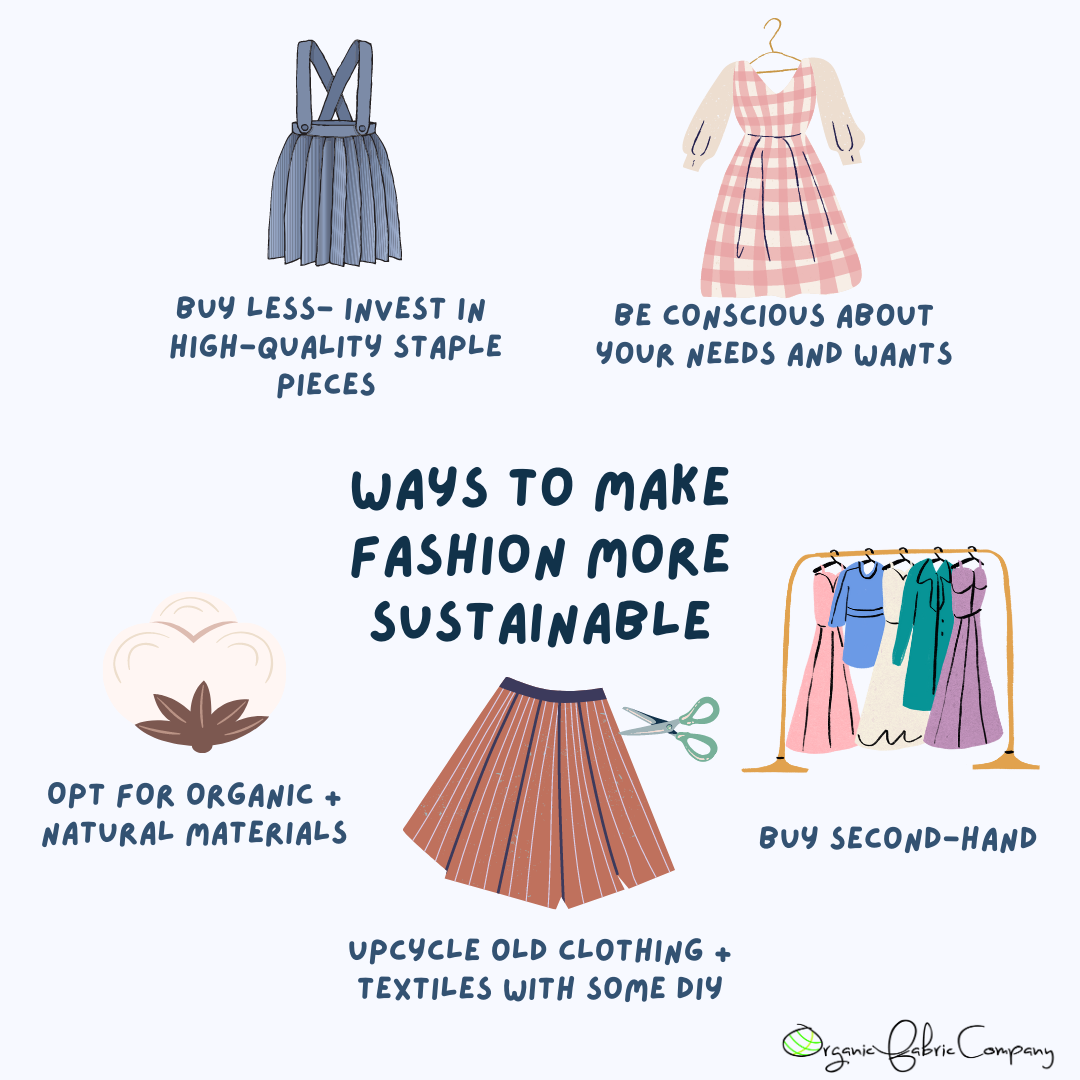Cape Town Sustainable Fashion: Redefining Design with Honest Choices
Cape Town Sustainable Fashion: Redefining Design with Honest Choices
Blog Article
Remain Ahead of the Curve by Exploring Innovative Fashion Trends
In an industry as vibrant as fashion, staying ahead includes more than just adhering to current trends-- it requires an exploration of innovation. Smart fabrics, as an example, are transforming garments right into functional work of arts, while 3D printing is changing style processes with its personalized, waste-reducing abilities. As sustainability becomes a keystone, innovations like green materials and round fashion practices are reshaping environmental obligation - Cape Town Sustainable Fashion. Furthermore, the convergence of technology and fashion proclaims a new age of customer interaction. Exactly how, then, can these arising patterns redefine the future of fashion, and what ramifications do they hold for brands seeking to flourish in this evolving landscape?

Accepting Smart Textiles
Over the last few years, the garment industry has actually observed a transformative shift with the integration of wise fabrics, a cutting-edge technology that blends modern technology with textile. This evolution represents not just a combination of visual appeals and performance yet additionally a considerable jump in the direction of sustainability and personalization in vogue. Smart textiles, likewise understood as e-textiles, installed sophisticated electronic devices such as sensors and conductive threads within the fabric, enabling garments to interact with the environment or the wearer.
These fabrics are designed to keep an eye on physiological parameters, such as heart rate or body temperature level, offering real-time health and wellness analytics. Past wellness applications, wise textiles are likewise being used for flexible clothes, which can alter shade or pattern in reaction to environmental stimulations, therefore offering a dynamic style experience.
Moreover, the development of energy-harvesting fabrics that generate power from motion or sunshine is leading the means for self-dependent wearable modern technology. This innovation is attracting eco aware customers and designers aiming to minimize the eco-friendly footprint of style. As r & d in this field breakthrough, smart fabrics are expected to end up being significantly common, reshaping the landscape of modern style with their multifunctional capabilities.
The Increase of 3D Printing
Reinventing the production landscape, 3D printing has become a game-changer in the style industry. This cutting-edge innovation has enabled developers to push the boundaries of creativity, creating detailed and customized garments that were previously unbelievable. By leveraging electronic design and additive manufacturing, 3D printing assists in the development of intricate geometries and patterns, allowing developers to trying out new appearances and structures.
A significant advantage of 3D printing in style is its capability to create on-demand, decreasing waste and lowering inventory demands. This performance not just enhances manufacturing procedures however likewise permits for quick prototyping, allowing developers to bring their visions to life in a shorter timeframe. Furthermore, 3D printing supports personalization to a level unparalleled by conventional techniques, providing tailored fits and special styles tailored to private consumer choices.
The rise of 3D printing has actually likewise equalized style, making it easily accessible to arising designers who can now fabricate high-grade pieces without substantial financial investment in standard production facilities. As modern technology continues to advance, the apparel industry is positioned to harness the complete potential of 3D printing, discovering new products and strategies that will undoubtedly redefine how style is developed and created.
Sustainable Style Advancements
As the garment industry faces the pushing requirement for environmental duty, sustainable style advancements have actually emerged at the center of transformative change. The growing understanding of ecological influence has actually sustained a shift towards even more eco-conscious techniques and materials. Brand names and designers are currently prioritizing sustainability, integrating techniques that reduce waste and minimize carbon impacts.
One substantial growth is the rise of circular style, which highlights click here for more recycling and upcycling to extend the lifecycle of garments. This method not only reduces waste however also motivates customers to take on a much more mindful approach to apparel usage.
Another breakthrough hinges on the adoption of cutting-edge dyeing strategies that utilize waterless procedures or all-natural dyes, therefore decreasing the vast amounts of water and chemicals commonly made use of in fabric dyeing. In addition, developments in biotechnology have led to the production of lab-grown natural leather and materials, providing cruelty-free and environmentally pleasant choices to traditional products. Through these pioneering efforts, the fashion business is making meaningful strides in the direction of an extra sustainable future.

Tech-Integrated Clothing
Tech-integrated garments stands for a groundbreaking blend of fashion and technology, reshaping exactly how people communicate with their clothes. This ingenious domain is noted by the addition of anonymous wise fabrics and embedded digital parts, enhancing both performance and aesthetic charm. From physical fitness trackers installed in sports apparel to warmed coats controlled via smartphone applications, tech-integrated garments uses consumers unmatched convenience and adaptability.
Introducing brand names are driving this pattern, focusing on developing garments that react to ecological stimulations or user commands. As an example, some garments can transform shade or pattern in response to temperature level shifts, while others incorporate biometric sensors to keep an eye on wellness metrics like heart rate or tension degrees. The smooth combination of modern technology into fabrics additionally reaches ecological sustainability, with efforts to create self-cleaning materials or garments that adapt to weather problems, hence minimizing the demand for several layers.
Additionally, the arrival of wearable modern technology is not simply restricted to apparel however encompasses accessories like watches and eyewear, further expanding the range of tech-integrated fashion. As the industry proceeds to innovate, the potential for customization and customization in apparel grows, offering customers special, tech-enhanced style experiences that provide to their individual demands and choices.
Future of Virtual Style
Over the last few years, the future of online style has actually become a transformative pressure within the market, leveraging advancements in digital innovation to redefine just how fashion is developed, experienced, and taken in. By incorporating enhanced reality (AR), digital fact (VR), and 3D layout devices, designers can now craft interactive and immersive experiences that go beyond traditional fashion borders. Online fashion enables for the development of garments that exist exclusively in digital settings, providing countless opportunities for advancement without the limitations of informative post physical production.
This electronic shift not just offers opportunities for imaginative expression but also addresses sustainability issues inherent in typical style practices. Cape Town Sustainable Fashion. By getting rid of the need for physical resources, online style reduces waste and decreases carbon impacts. In addition, the surge of virtual style lines up with the boosting consumer demand for unique and personalized experiences, as virtual garments can be customized and tailored to private choices effortlessly

Final Thought
The fashion industry's future lies in the combination of sustainable techniques and innovative technologies. Digital style is poised to redefine consumer communications.
In current years, the fashion industry has witnessed a transformative shift with the integration of clever fabrics, an advanced innovation that mixes innovation with material.As the style market grapples with the pushing demand for ecological responsibility, lasting fashion developments have actually emerged at the center of transformative change.In current years, the future of digital fashion has arised as a transformative force within the industry, leveraging advancements in digital innovation to redefine how fashion is created, experienced, and eaten. The rise of online fashion lines up with the raising consumer demand for one-of-a-kind and personalized experiences, as digital garments can be personalized and tailored to individual choices with convenience.
The fashion industry's future lies in the combination of lasting practices and innovative technologies.
Report this page